Today in Nanortalik I learned that if the ice mass that covers 85% of Greenland were to melt, it would raise sea levels by approximately 20 feet and that would see most coastal cities (including Brisbane) pretty much pooched. Cheerful thought indeed.
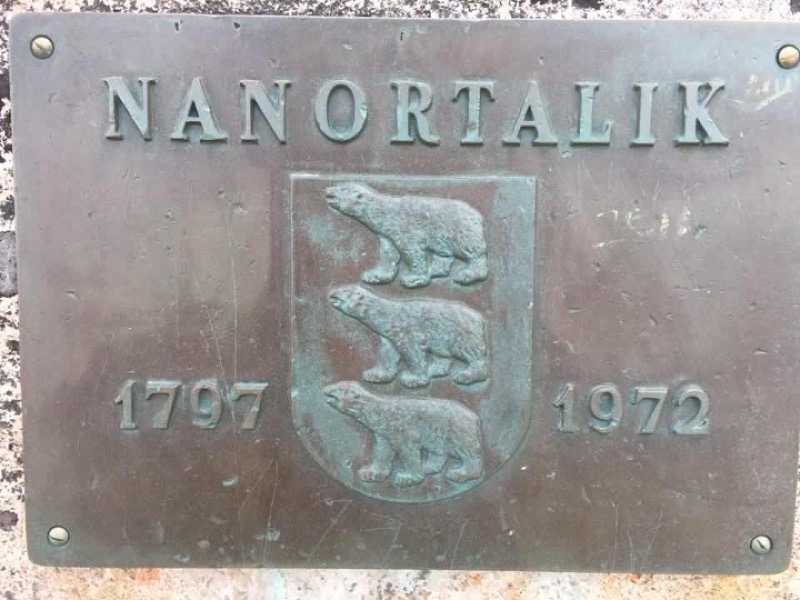 Nanortalik means Polar Bear Country or Place of Polar Bears but we were duly warned not to expect to see any polar bears, the most likely sightings of polar bears would be a rare sighting of one floating past on an ice berg. It is a town of barely 1500 people with another 1200 living in surrounding nearby villages and seems to consists of a school, a couple of supermarkets, a tourist information centre, a very rocky cemetery, a fishing factory, a small museum, a church and of course a couple of pubs. Today it is sunny, cool (about 6-9C) and quiet here… like eerily quiet. It’s summer holidays yet with the cruise ship having attracted a handful of children that were playing up to the tourists, we couldn’t hear any children playing in the streets as we walked through town. There were cars going past and one random ambulance driver (who seemed to be cracking laps looking for an incident to attend), but once those vehicle noises faded away, walking through the middle of town the only noise that could be heard was the crunch of our own boots on the gravel underfoot.
Nanortalik means Polar Bear Country or Place of Polar Bears but we were duly warned not to expect to see any polar bears, the most likely sightings of polar bears would be a rare sighting of one floating past on an ice berg. It is a town of barely 1500 people with another 1200 living in surrounding nearby villages and seems to consists of a school, a couple of supermarkets, a tourist information centre, a very rocky cemetery, a fishing factory, a small museum, a church and of course a couple of pubs. Today it is sunny, cool (about 6-9C) and quiet here… like eerily quiet. It’s summer holidays yet with the cruise ship having attracted a handful of children that were playing up to the tourists, we couldn’t hear any children playing in the streets as we walked through town. There were cars going past and one random ambulance driver (who seemed to be cracking laps looking for an incident to attend), but once those vehicle noises faded away, walking through the middle of town the only noise that could be heard was the crunch of our own boots on the gravel underfoot.
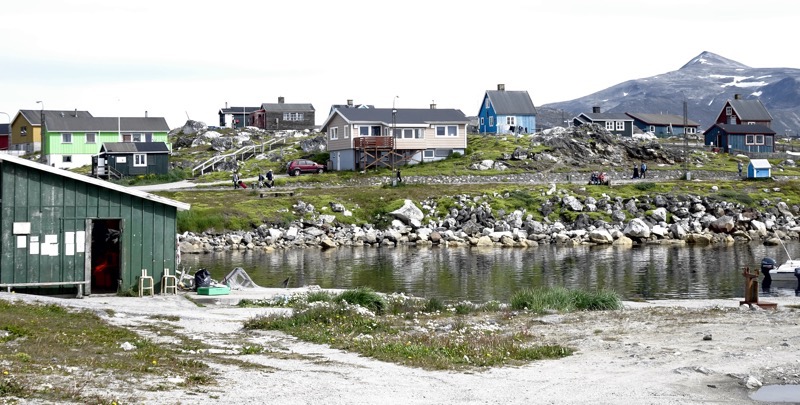
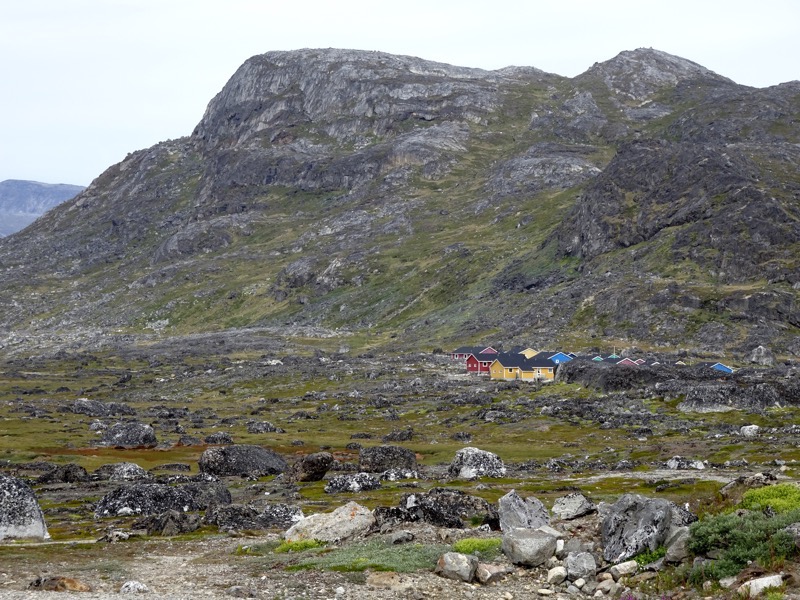 In the local market – hair products, throat lozenges, fungus cream and CCI standard.
In the local market – hair products, throat lozenges, fungus cream and CCI standard.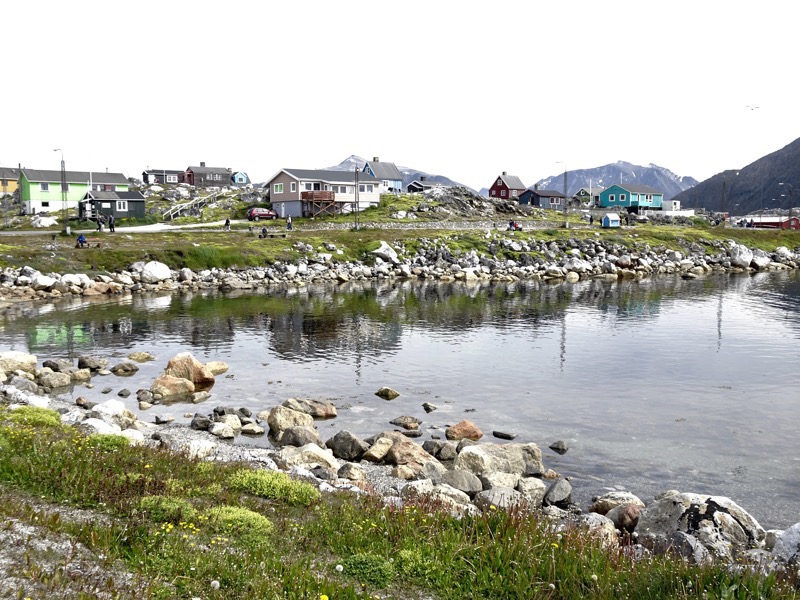
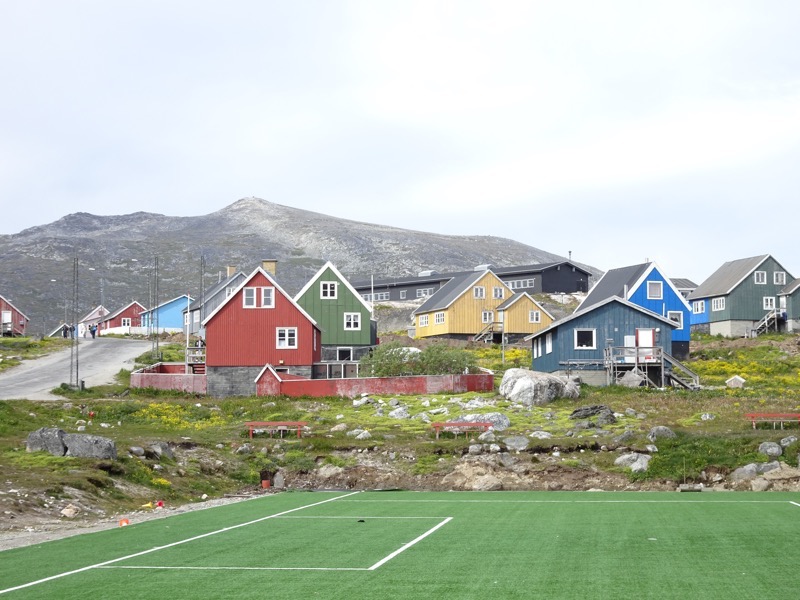
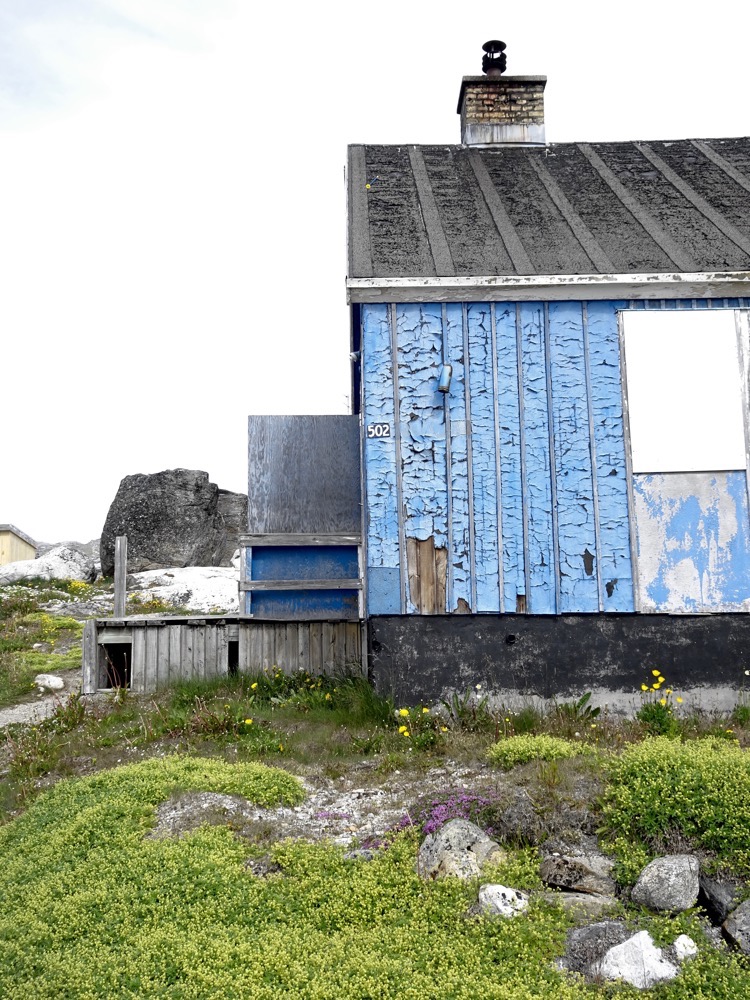
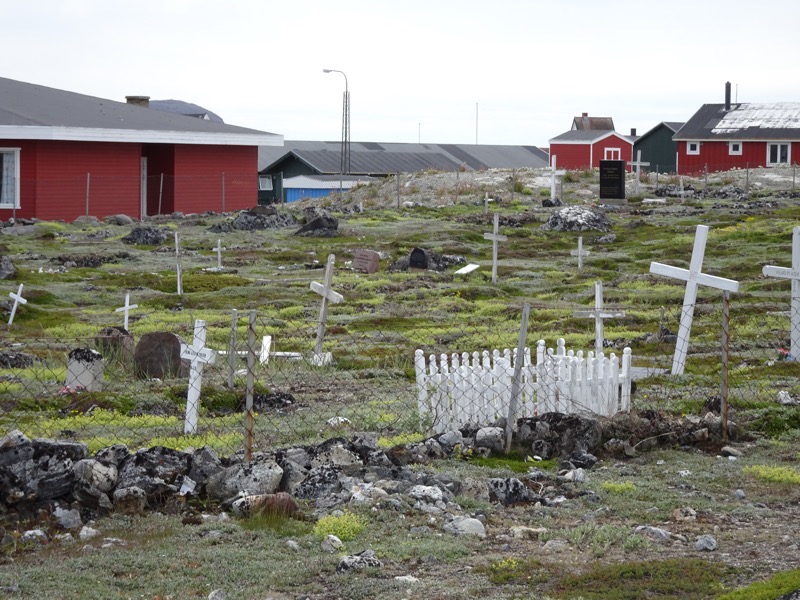
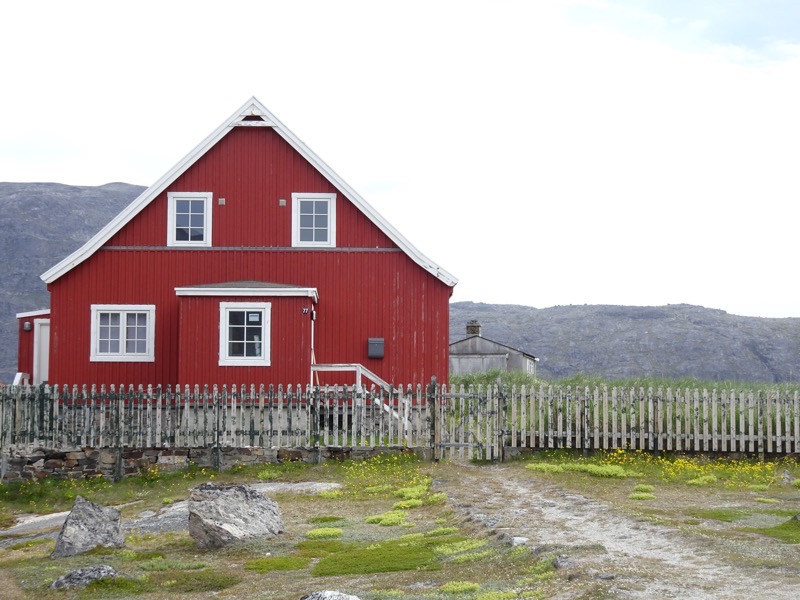
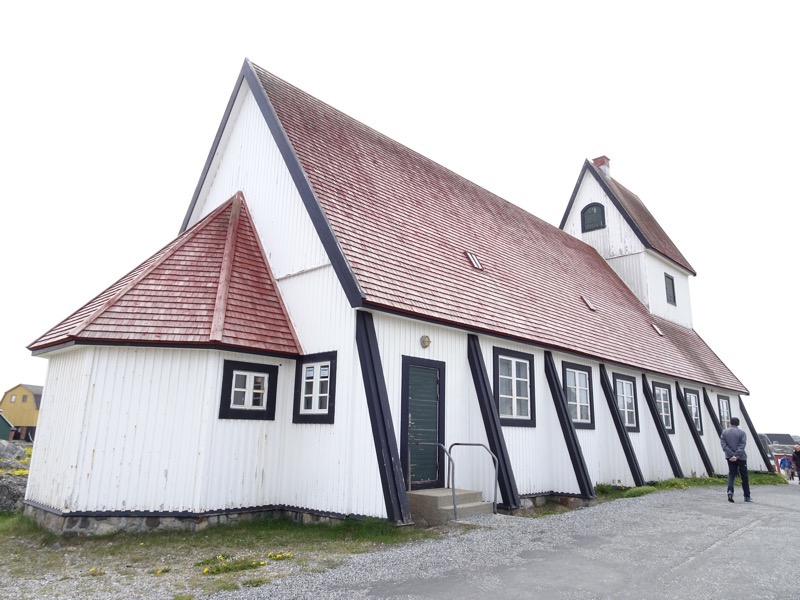 Above the local church. Below some Polar Bear claws for sale as souvenirs (about $300 each).
Above the local church. Below some Polar Bear claws for sale as souvenirs (about $300 each).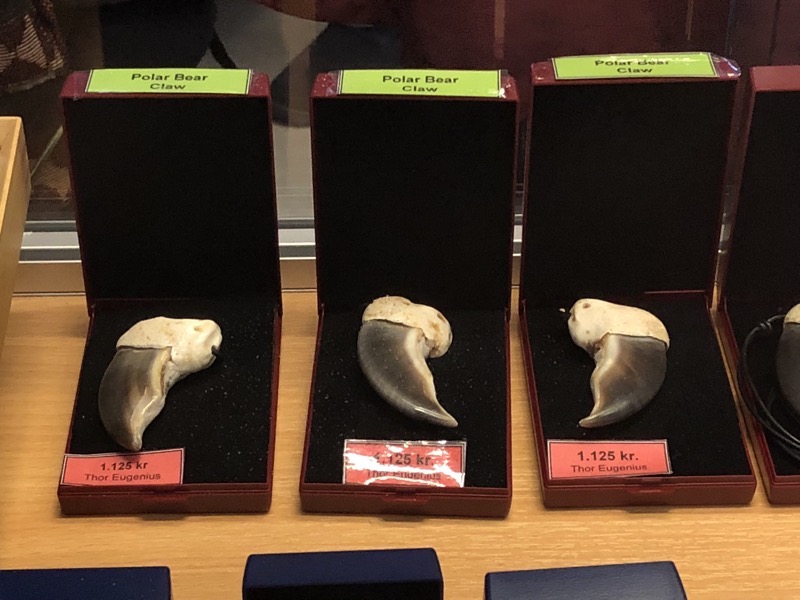 Brightly coloured houses, perhaps to stand out against the snow during the winter.
Brightly coloured houses, perhaps to stand out against the snow during the winter.
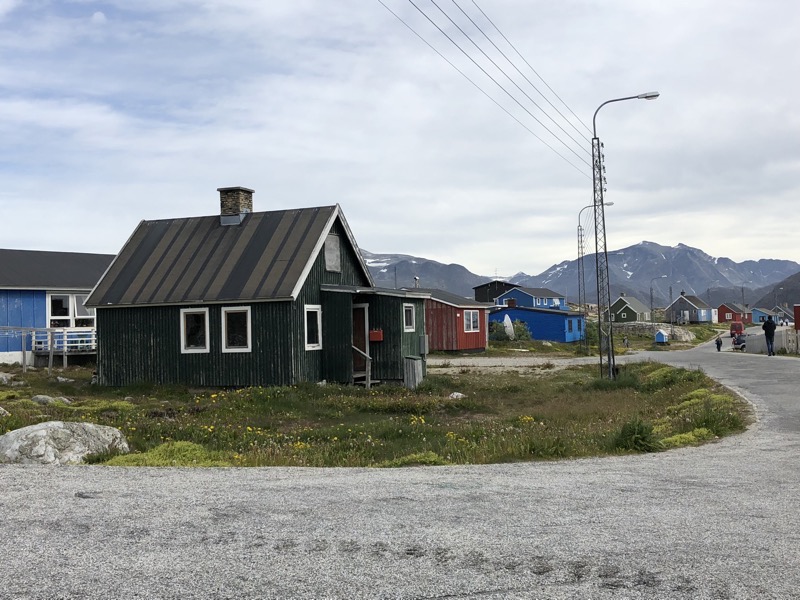 It must be a very hard life here with the Inuit people having survived here for as many as 5000 Arctic winters – it’s cold enough here for me in the middle of summer. They lived on hunting for seals, musk ox, polar bear, arctic hares and whales; working together as a community to gather food and whale oil and blubber for fuel. Living in small collaborative village communities, warfare is almost completely unknown to the Inuit people here and communal assistance is guaranteed from their fellow villagers – this is how they have always survived, by helping each other. Many people even now rely on communal water stations as they have no plumbing to their houses and we couldn’t imagine what it must be like in the dead of winter having to go outside with your 5 gallon jerry can to collect water from the town’s communal water stations.
It must be a very hard life here with the Inuit people having survived here for as many as 5000 Arctic winters – it’s cold enough here for me in the middle of summer. They lived on hunting for seals, musk ox, polar bear, arctic hares and whales; working together as a community to gather food and whale oil and blubber for fuel. Living in small collaborative village communities, warfare is almost completely unknown to the Inuit people here and communal assistance is guaranteed from their fellow villagers – this is how they have always survived, by helping each other. Many people even now rely on communal water stations as they have no plumbing to their houses and we couldn’t imagine what it must be like in the dead of winter having to go outside with your 5 gallon jerry can to collect water from the town’s communal water stations.
In the local market – hair products, throat lozenges, fungus cream and CCI standard.
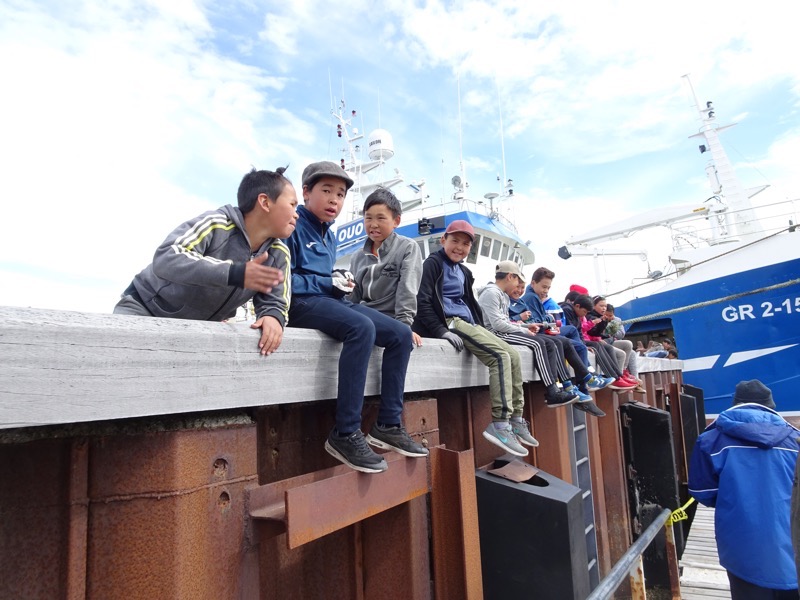
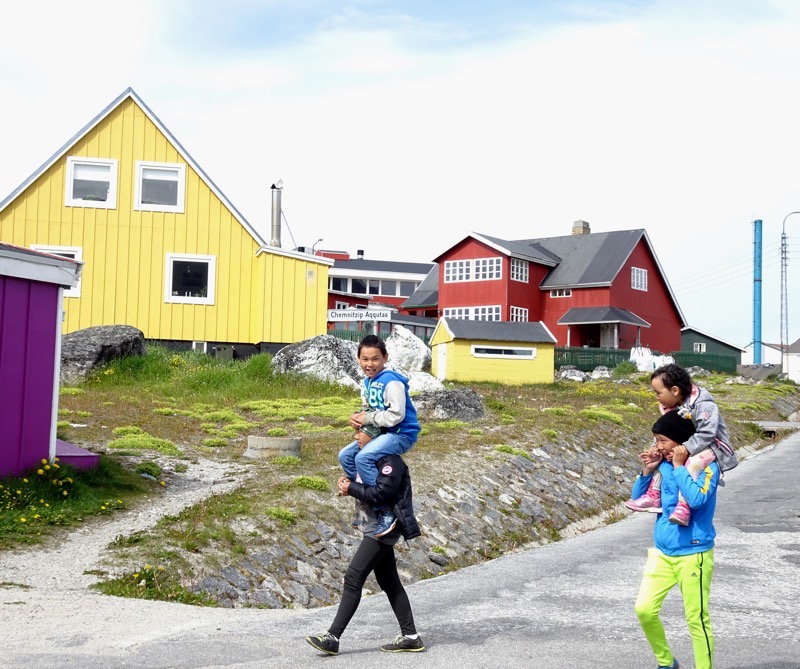

The people are quite friendly and we are told that Greenlanders firmly believe that they live in the most beautiful place in the world and that we, the outsiders, are the less fortunate ones.
Greenland is really beautiful – the landscapes are dramatic, the light here has a truly lovely quality, the towns are colourful and the people are friendly. On top of that we have been blessed with truly fortunate weather so much so the Maitre D’ is convinced the Captain has a remote control for the weather. Having said that, unless I was heading for the Artic, I’m not sure that I would come back… which is really unusual. Cruise travel tends to give you a taste for a place which usually leaves you wanting to come back and see a place ‘properly’.

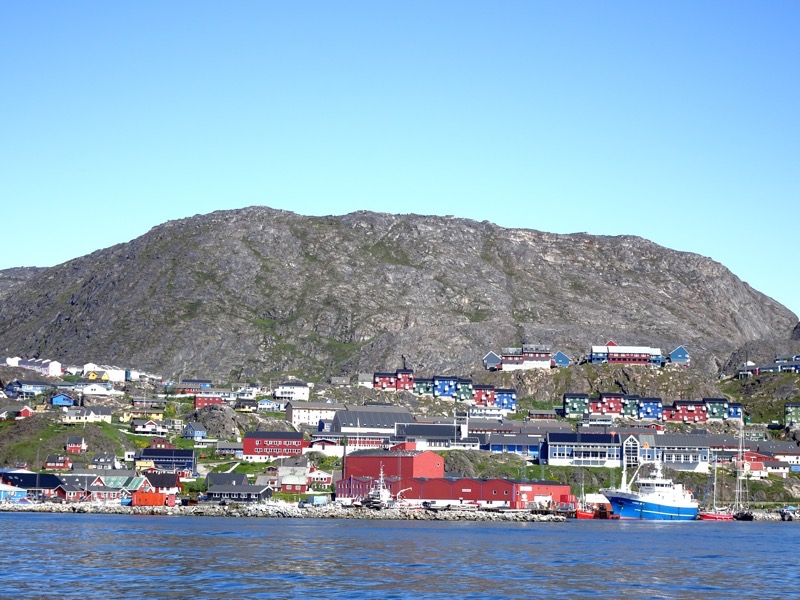
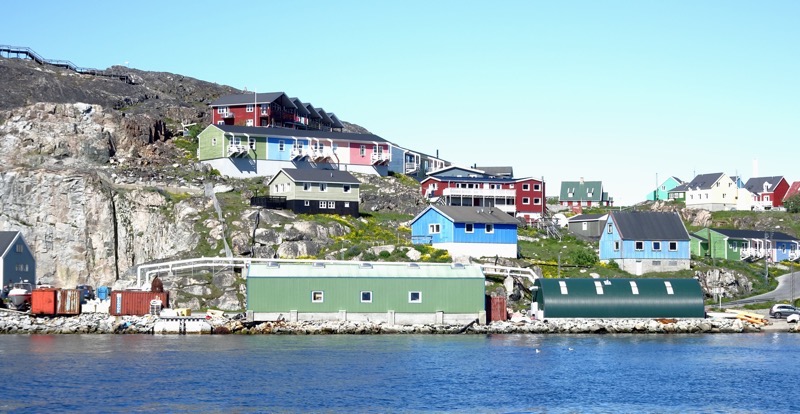
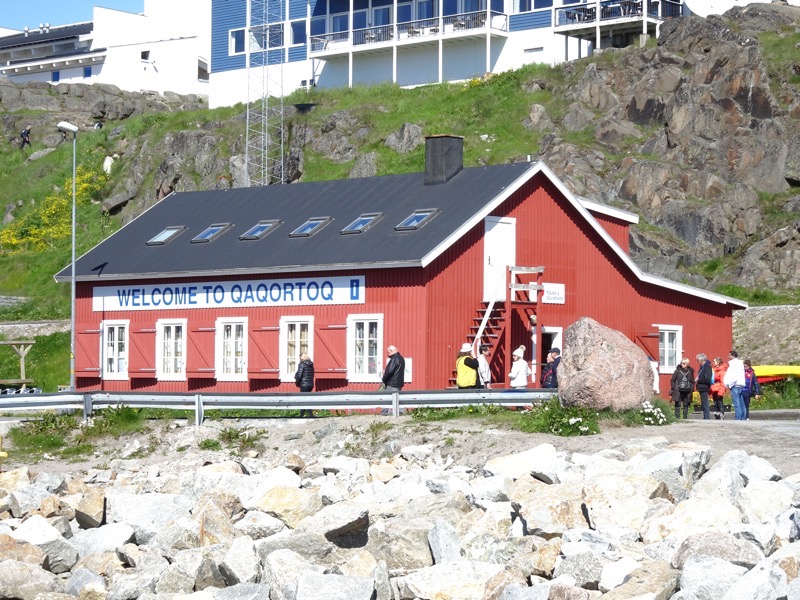
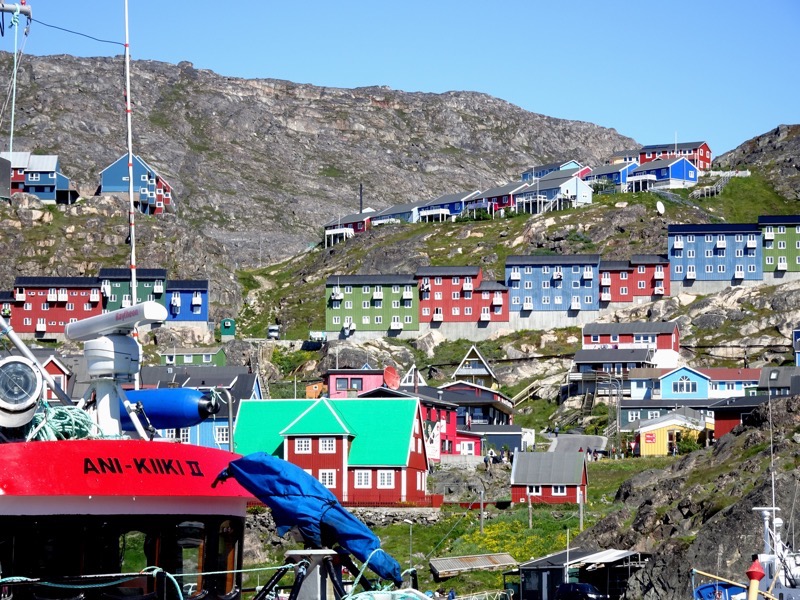 Given that about 85% of Greenland is covered with a permanent ice cap which is several miles thick in some areas, the crazy people who choose to live here are a sturdy, practical sort of people. The population is predominant Inuit, though there were some small periods around 900AD where Danish and Norwegian vikings inhabited the area when Erick the Red landed in souther Greenland in 982 and decided to found a settlement. At the height of the viking settlement, there were perhaps was many as 5000 inhabitants living in over 300 farms but they did not mix with the Inuit or learn their survival skills for Greenland’s conditions which were infinitely harsher than Norway or Denmark, and so the viking populations died out at various points (though it seems debatable if this was due to plague or a mini ice age drove them away).
Given that about 85% of Greenland is covered with a permanent ice cap which is several miles thick in some areas, the crazy people who choose to live here are a sturdy, practical sort of people. The population is predominant Inuit, though there were some small periods around 900AD where Danish and Norwegian vikings inhabited the area when Erick the Red landed in souther Greenland in 982 and decided to found a settlement. At the height of the viking settlement, there were perhaps was many as 5000 inhabitants living in over 300 farms but they did not mix with the Inuit or learn their survival skills for Greenland’s conditions which were infinitely harsher than Norway or Denmark, and so the viking populations died out at various points (though it seems debatable if this was due to plague or a mini ice age drove them away).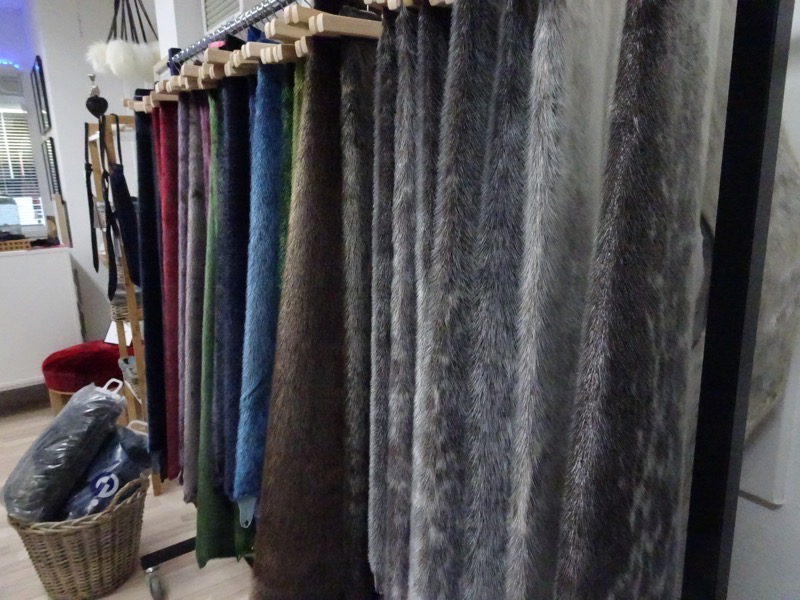
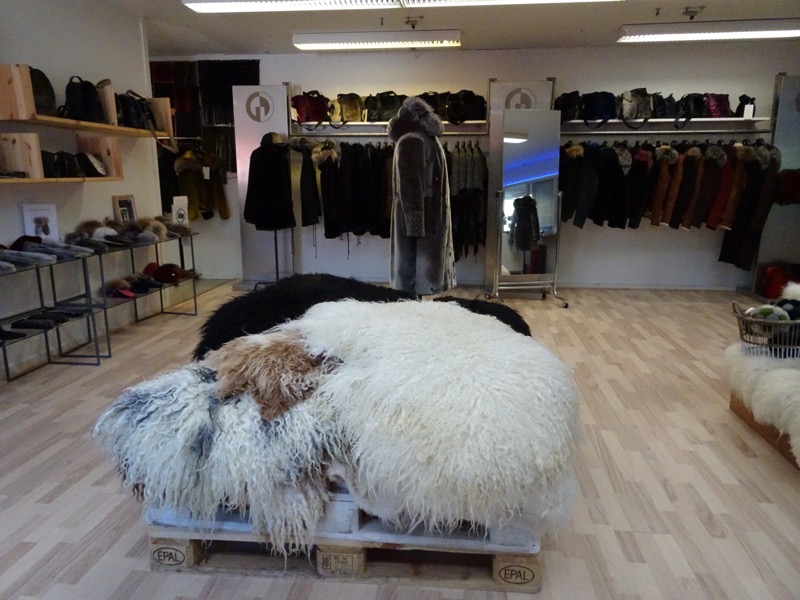


 After the tannery, we made our way into the little town via a walkway scattered with rock sculptures carved into a cliff face.
After the tannery, we made our way into the little town via a walkway scattered with rock sculptures carved into a cliff face. 
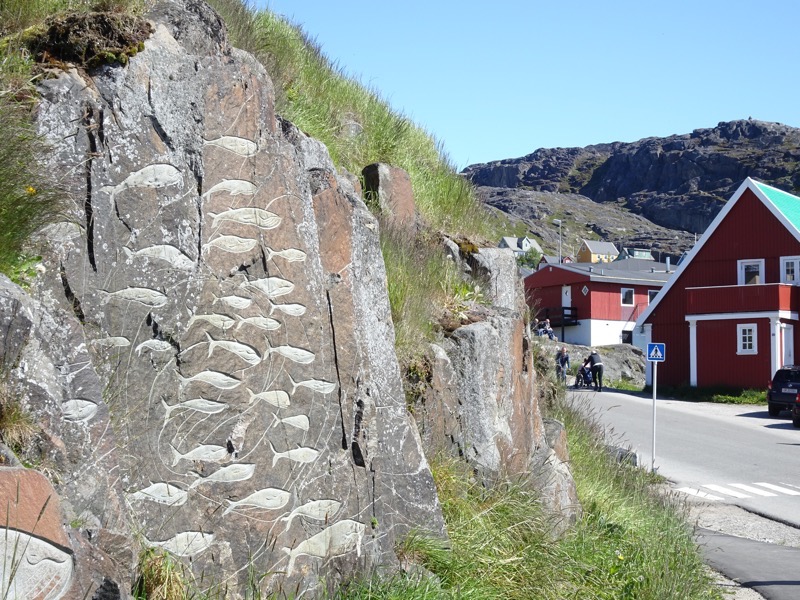
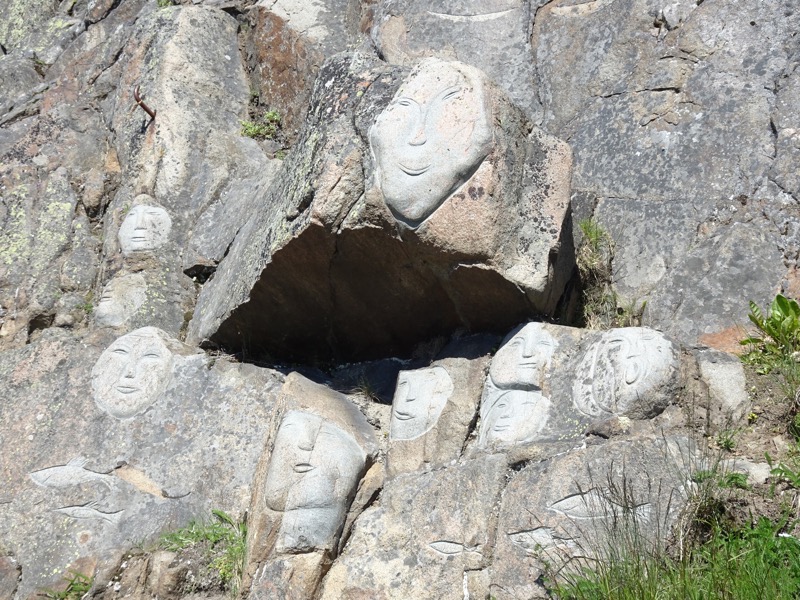
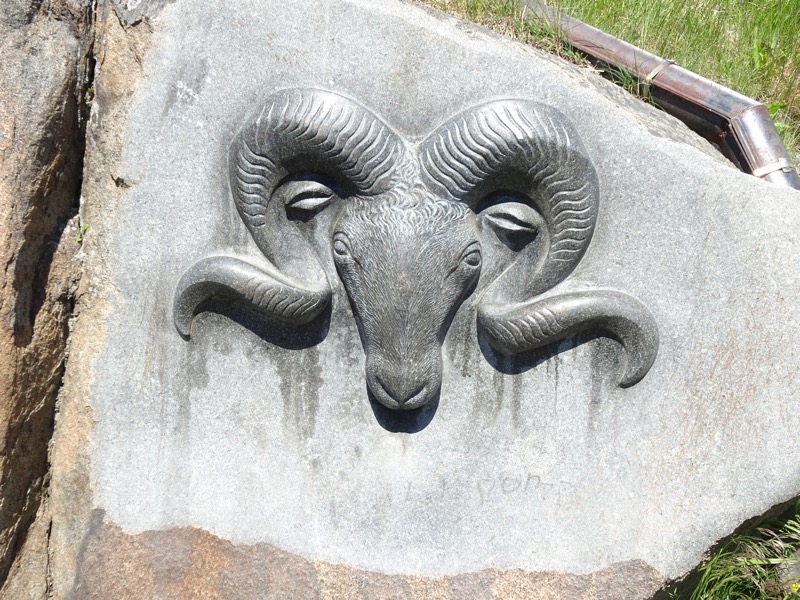

 At the end of this artistic walk way was a town square with a small gravity fed water fountain with a nearby fish market. Only once we got there, I didn’t actually see any fish – only whale meat for sale, which we heard was massive chunks of minke and pilot whale. The Greenland Inuit people are not engaged in commercial whaling operations, however they appear to rely on whale meat to supplement their diet of reindeer meat. I could be wrong about that – but they are definitely not hunting whale for mass export. Having spent many days earlier this year watching whales frolicking close to our zodiacs in Antartica just last March, it was a bit confronting to see these huge chunks of whale meat hacked up on tables for sale in the market. Those beautiful majestic animals… :/ The meat is a dark, dark ox blood red compared to the bright red we are accustomed to seeing in beef and it looks heavy and dense somehow, and no, we did not consume any whale meat and I’m not sure I would had it been offered to me.
At the end of this artistic walk way was a town square with a small gravity fed water fountain with a nearby fish market. Only once we got there, I didn’t actually see any fish – only whale meat for sale, which we heard was massive chunks of minke and pilot whale. The Greenland Inuit people are not engaged in commercial whaling operations, however they appear to rely on whale meat to supplement their diet of reindeer meat. I could be wrong about that – but they are definitely not hunting whale for mass export. Having spent many days earlier this year watching whales frolicking close to our zodiacs in Antartica just last March, it was a bit confronting to see these huge chunks of whale meat hacked up on tables for sale in the market. Those beautiful majestic animals… :/ The meat is a dark, dark ox blood red compared to the bright red we are accustomed to seeing in beef and it looks heavy and dense somehow, and no, we did not consume any whale meat and I’m not sure I would had it been offered to me.

 After the fish market we wandered over to the local church and had a poke around the town. It’s a very picturesque little place nestled on the edge of a rather rugged looking circular bay. A lovely little creek runs through the town to the bay and has glacially cold fresh water running through the town. We walked and pottered about checking out the local shops and talking to some of the locals before eventually heading back to the ship.
After the fish market we wandered over to the local church and had a poke around the town. It’s a very picturesque little place nestled on the edge of a rather rugged looking circular bay. A lovely little creek runs through the town to the bay and has glacially cold fresh water running through the town. We walked and pottered about checking out the local shops and talking to some of the locals before eventually heading back to the ship. 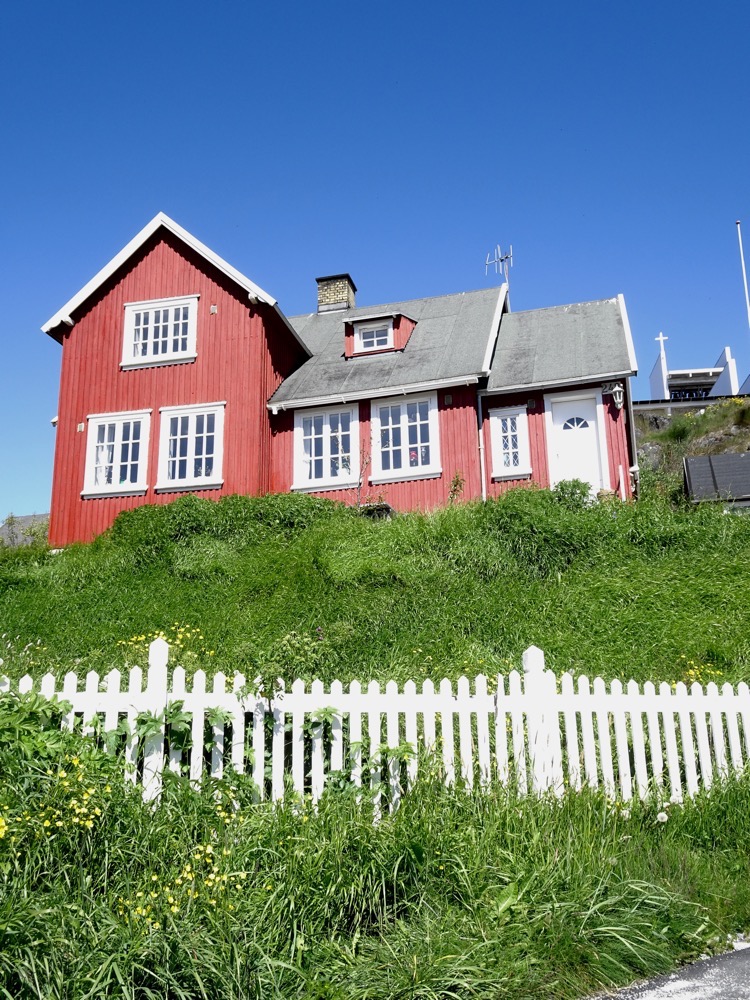

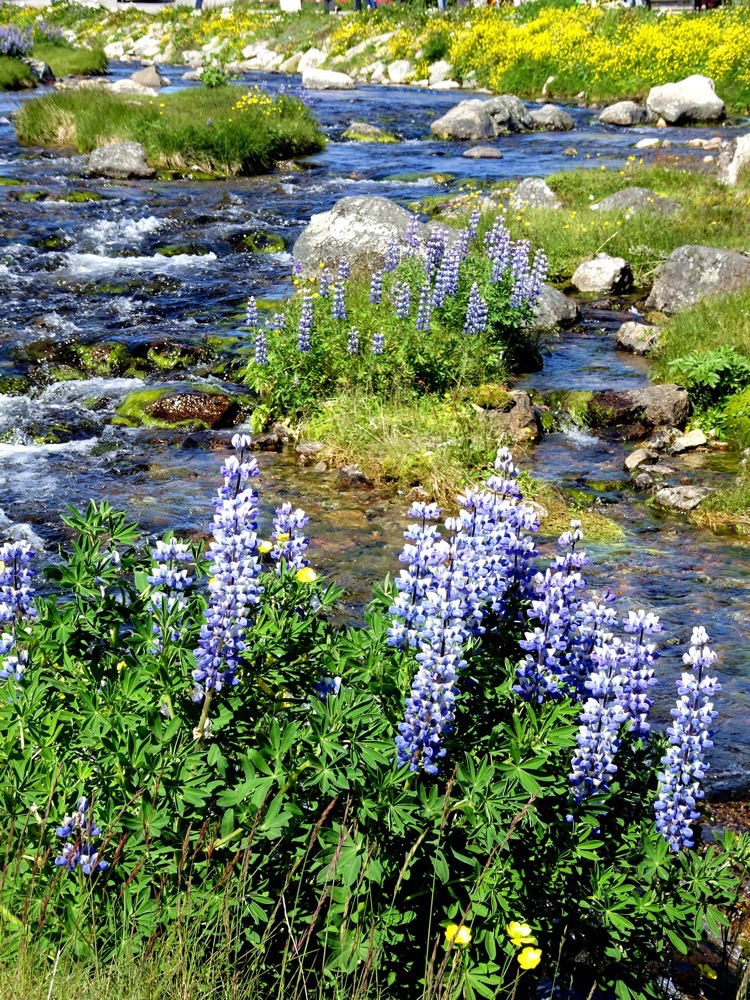


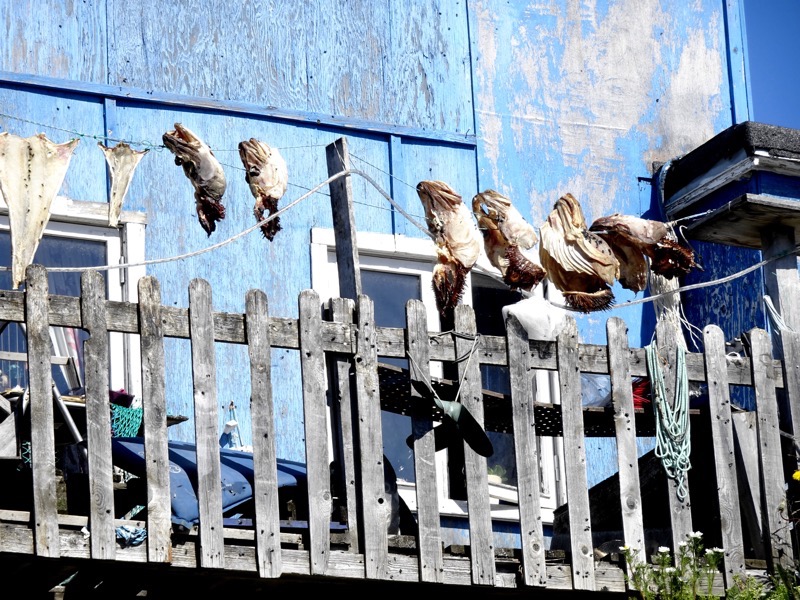 Once back on board we decided to head to B750 for a wee sail away party to see if we could spot any icebergs as we left Qaqortoq.
Once back on board we decided to head to B750 for a wee sail away party to see if we could spot any icebergs as we left Qaqortoq.